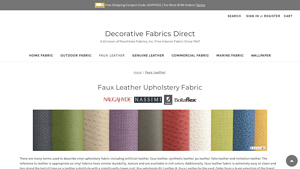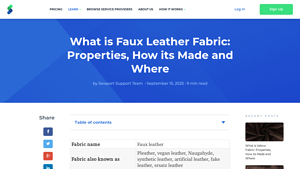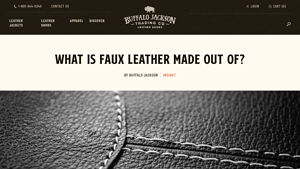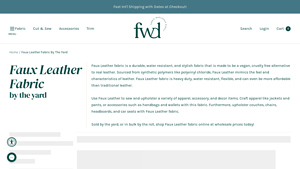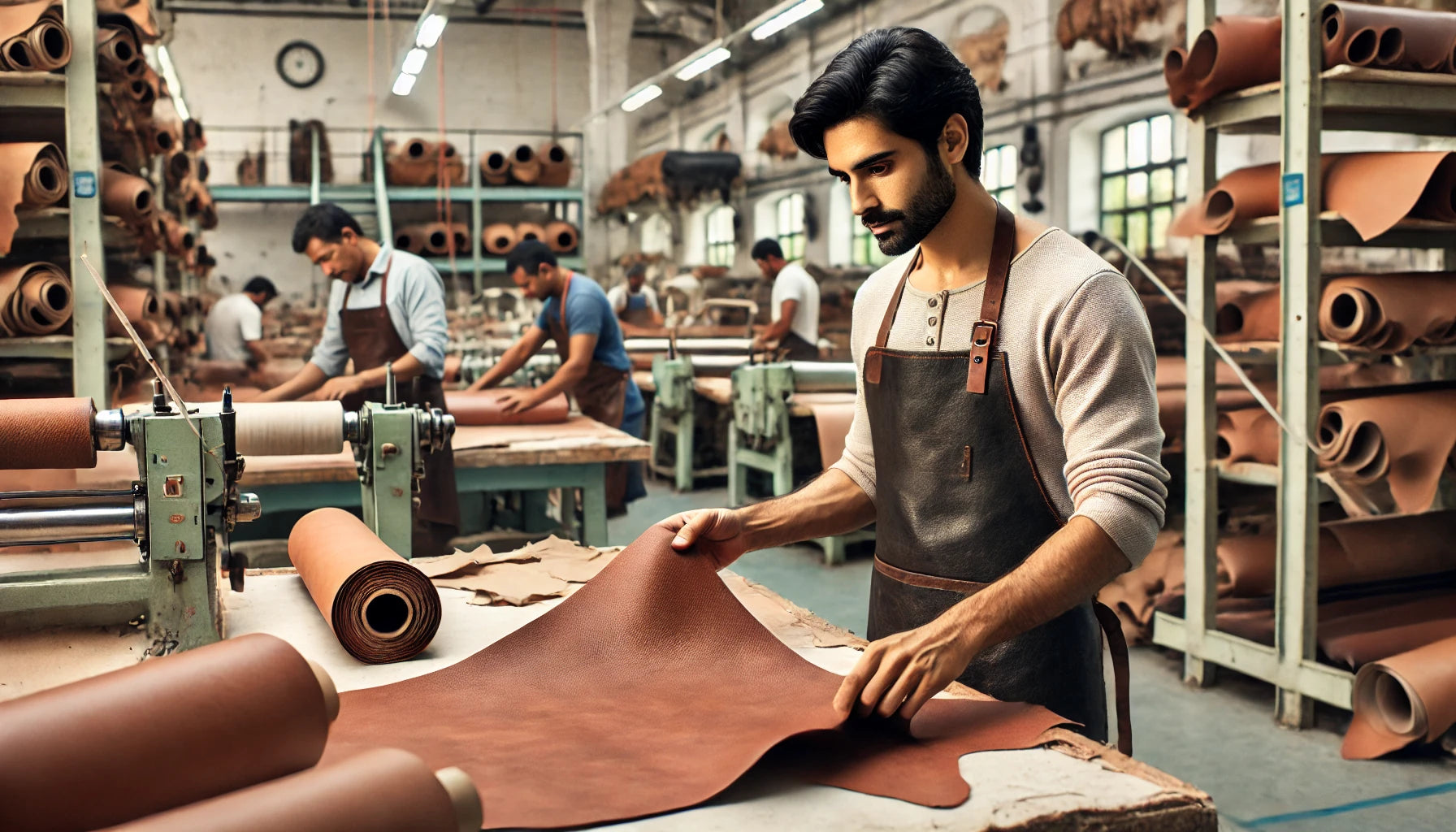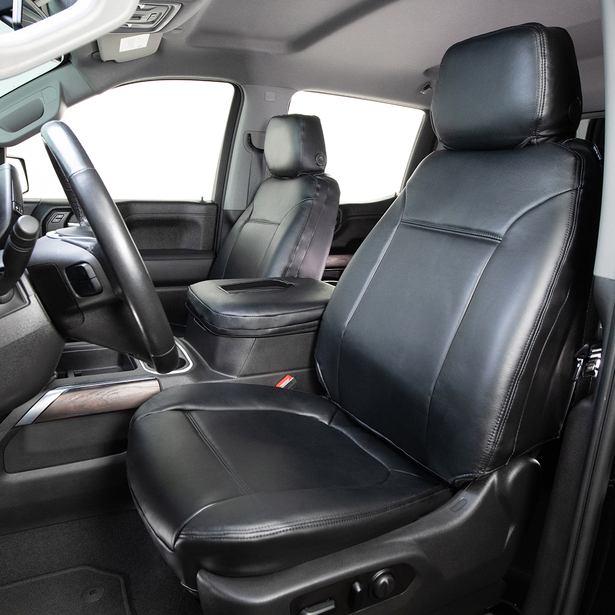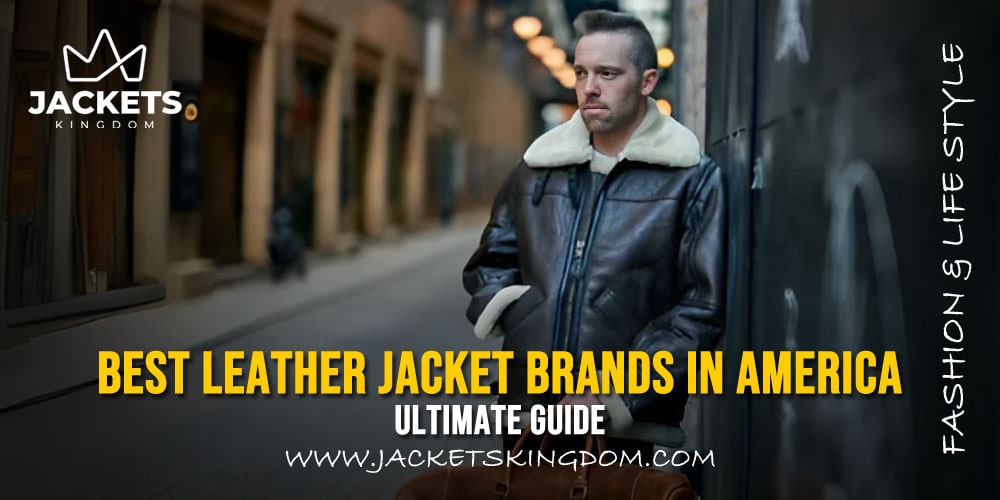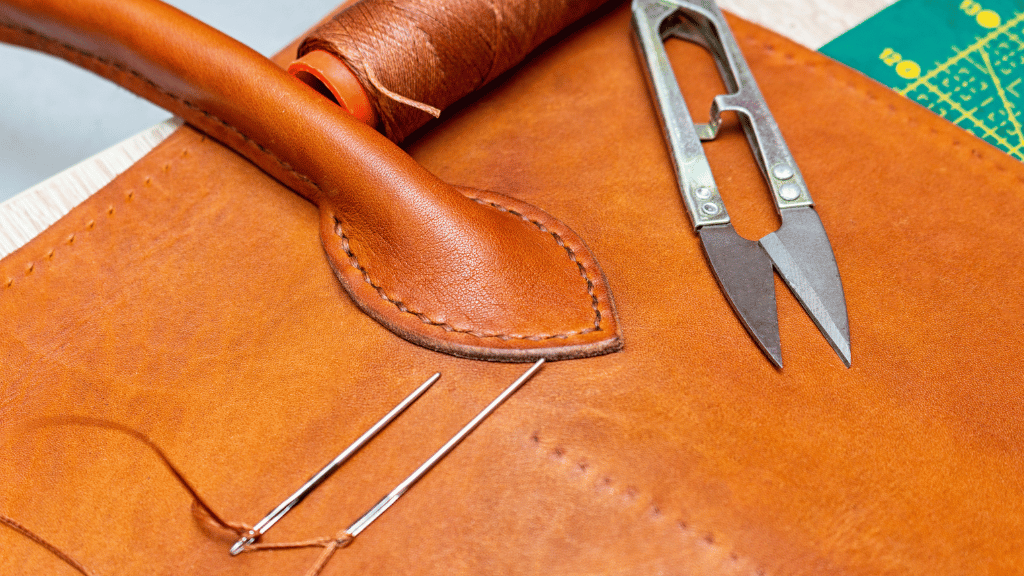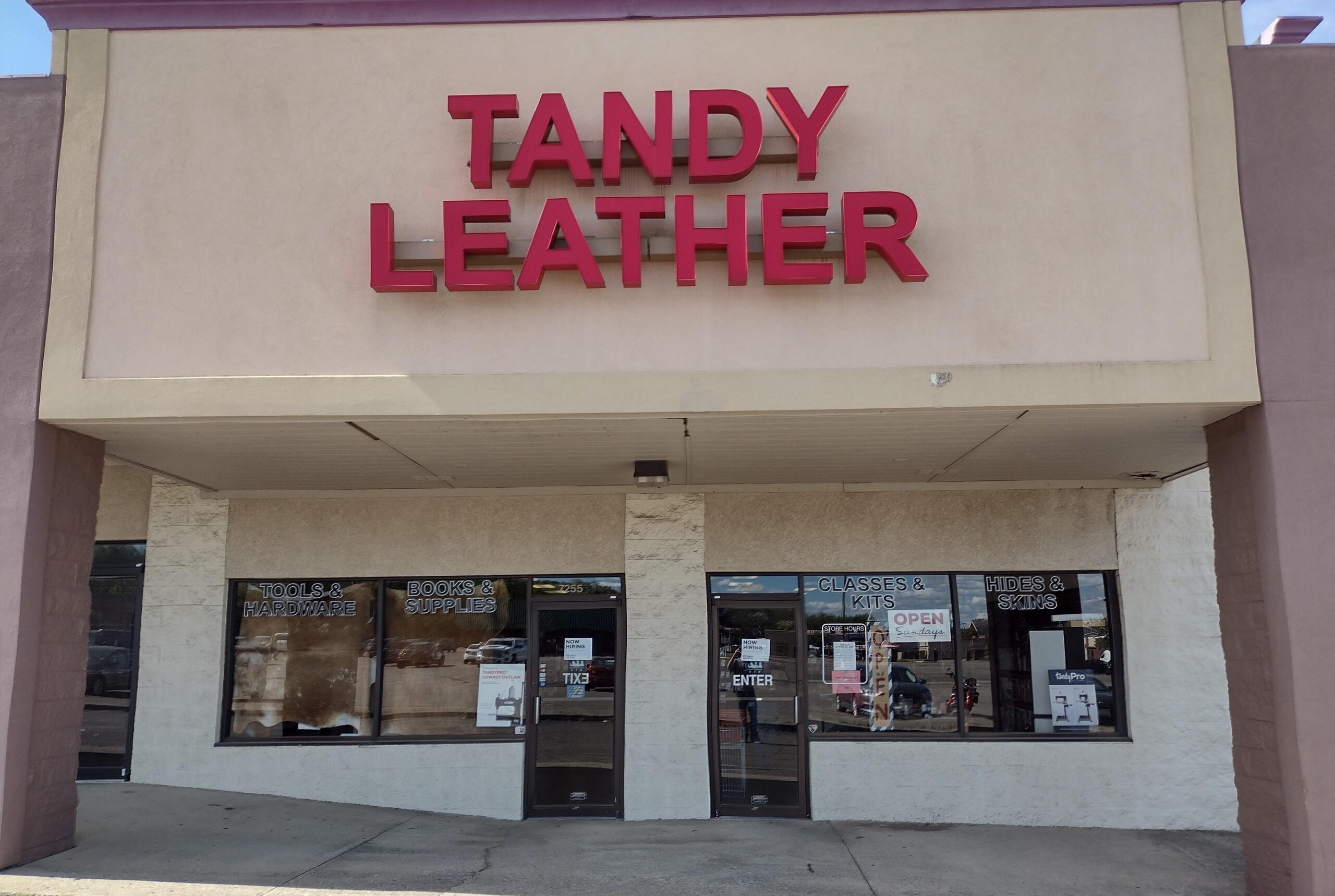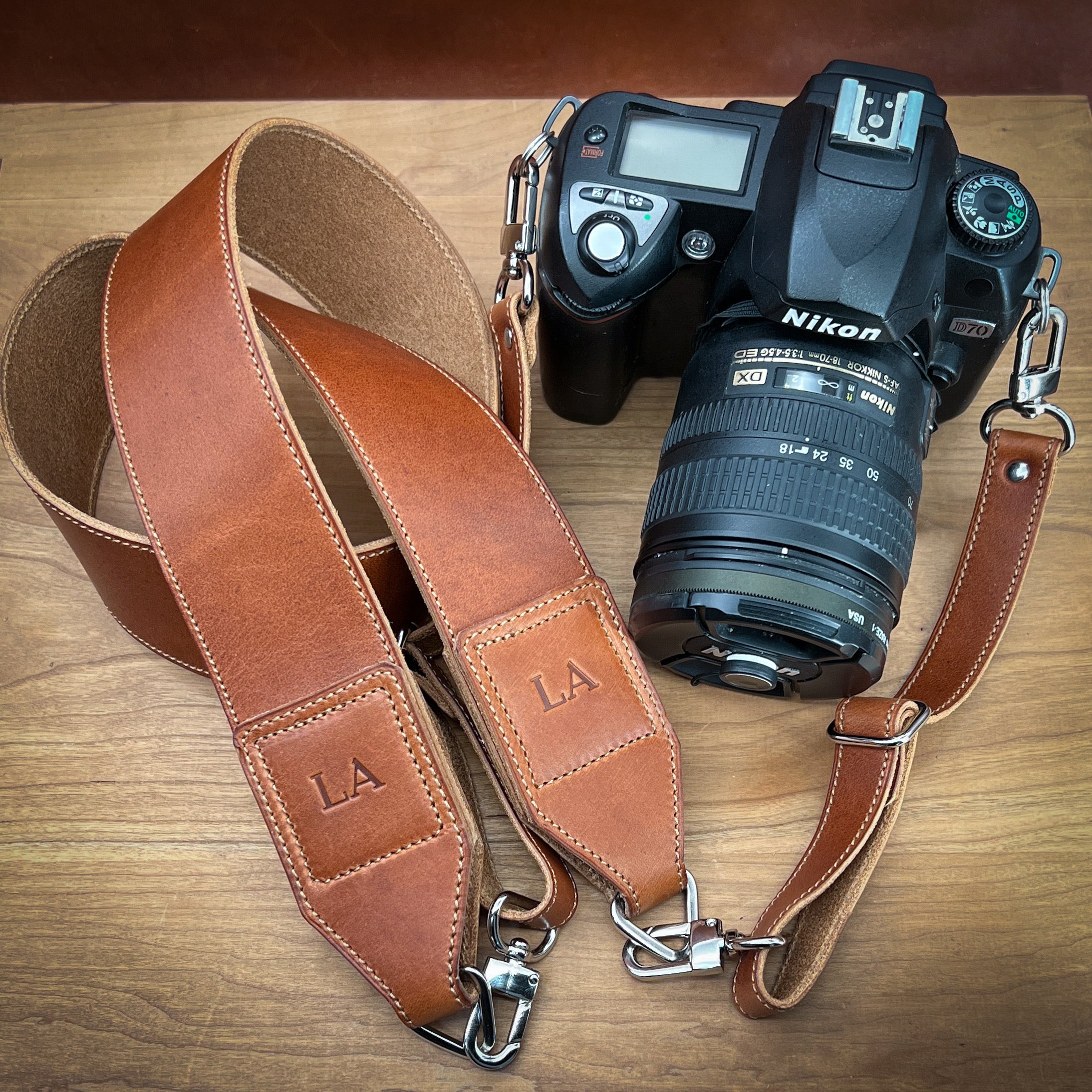Introduction: Navigating the Global Market for material synthetic leather
Navigating the global market for material synthetic leather presents a unique challenge for international B2B buyers, particularly when seeking high-quality alternatives to genuine leather that meet diverse needs. Sourcing durable and stylish upholstery options, such as faux leather for commercial applications, can be daunting amidst a plethora of choices and varying supplier credibility. This comprehensive guide addresses these challenges head-on, providing insights into the types of synthetic leather available, their applications across industries, and essential supplier vetting strategies.
In this guide, you will explore the nuances of different synthetic leather materials, including polyurethane (PU) and polyvinyl chloride (PVC), alongside their respective benefits and limitations. We delve into practical applications, from automotive upholstery to marine seating, highlighting how these materials can enhance product offerings while being cost-effective. Furthermore, we provide actionable insights on pricing trends, allowing buyers from regions like Africa, South America, the Middle East, and Europe, including Brazil and Saudi Arabia, to make informed purchasing decisions.
By equipping you with the knowledge to navigate this complex landscape, this guide empowers your business to select the right synthetic leather solutions that align with your quality standards and budgetary constraints. Whether you’re looking to enhance your product line or streamline procurement processes, you’ll find the tools and information necessary to succeed in today’s competitive market.
Table Of Contents
- Top 4 Material Synthetic Leather Manufacturers & Suppliers List
- Introduction: Navigating the Global Market for material synthetic leather
- Understanding material synthetic leather Types and Variations
- Key Industrial Applications of material synthetic leather
- 3 Common User Pain Points for ‘material synthetic leather’ & Their Solutions
- Strategic Material Selection Guide for material synthetic leather
- In-depth Look: Manufacturing Processes and Quality Assurance for material synthetic leather
- Practical Sourcing Guide: A Step-by-Step Checklist for ‘material synthetic leather’
- Comprehensive Cost and Pricing Analysis for material synthetic leather Sourcing
- Alternatives Analysis: Comparing material synthetic leather With Other Solutions
- Essential Technical Properties and Trade Terminology for material synthetic leather
- Navigating Market Dynamics and Sourcing Trends in the material synthetic leather Sector
- Frequently Asked Questions (FAQs) for B2B Buyers of material synthetic leather
- Strategic Sourcing Conclusion and Outlook for material synthetic leather
- Important Disclaimer & Terms of Use
Understanding material synthetic leather Types and Variations
| Type Name | Key Distinguishing Features | Primary B2B Applications | Brief Pros & Cons for Buyers |
|---|---|---|---|
| PU Leather | Soft, supple, and visually similar to genuine leather; resistant to moisture and stains. | Furniture upholstery, automotive interiors, fashion accessories. | Pros: Affordable, easy to clean, durable. Cons: Lower breathability compared to genuine leather. |
| PVC Leather | Made from polyvinyl chloride; more rigid and less flexible than PU leather, often available in vibrant colors. | Outdoor furniture, marine applications, protective covers. | Pros: Cost-effective, water-resistant. Cons: Less comfortable and breathable, can crack in extreme temperatures. |
| Vegan Leather | Eco-friendly alternative made from various plant-based materials; available in various textures. | Fashion items, upholstery, eco-conscious brands. | Pros: Sustainable, cruelty-free. Cons: May have varying durability depending on the material used. |
| Microfiber Leather | Made from ultra-fine synthetic fibers; offers a soft feel and high durability. | Luxury automotive interiors, high-end furniture. | Pros: Highly durable, stain-resistant, resembles genuine leather. Cons: Can be more expensive than other synthetic options. |
| Synthetic Suede | Soft texture resembling traditional suede; often made from polyester or nylon. | Apparel, upholstery, accessories. | Pros: Soft feel, available in various colors. Cons: Less water-resistant and durable than other types. |
What Are the Characteristics of PU Leather for B2B Buyers?
PU leather, or polyurethane leather, is a popular choice among B2B buyers due to its soft texture and visual similarity to genuine leather. It is highly resistant to moisture and stains, making it ideal for various applications such as furniture upholstery and automotive interiors. When purchasing PU leather, buyers should consider the thickness and finish options available, as these can affect durability and appearance. Additionally, its affordability compared to genuine leather makes it an attractive option for businesses looking to reduce costs while maintaining quality.
How Does PVC Leather Differ from Other Synthetic Leathers?
PVC leather, made from polyvinyl chloride, is another widely used synthetic leather type. It is often more rigid and less flexible than PU leather, making it suitable for applications requiring durability, such as outdoor furniture and marine products. B2B buyers should be aware of its vibrant color options and cost-effectiveness, though it may lack the comfort and breathability found in other types of synthetic leather. Understanding the specific application needs will help businesses choose the right type of PVC leather for their projects.
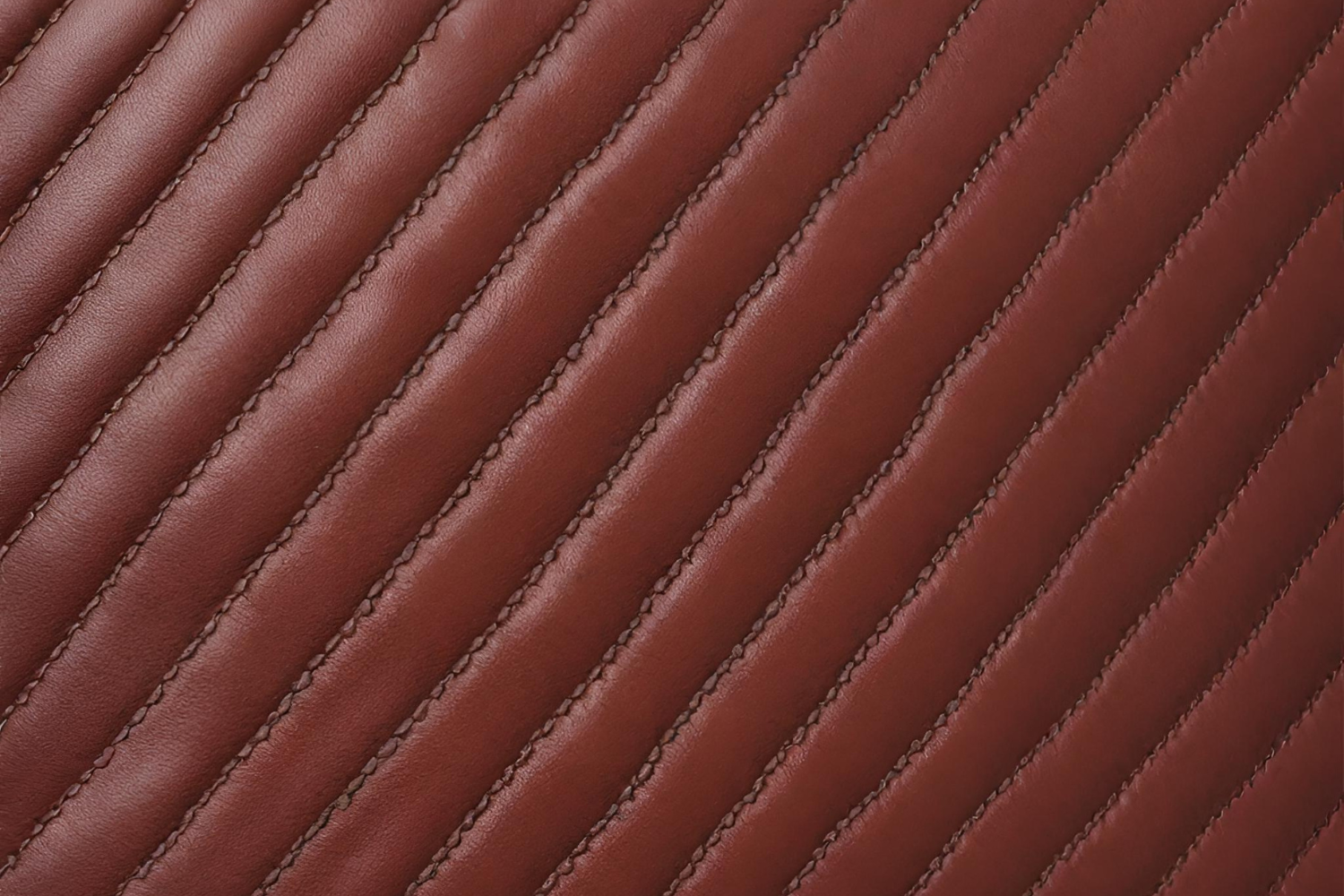
Illustrative image related to material synthetic leather
What Are the Benefits of Using Vegan Leather in B2B Transactions?
Vegan leather is an eco-friendly alternative made from plant-based materials, catering to the growing demand for sustainable products. It is suitable for various applications, including fashion items and upholstery for eco-conscious brands. Buyers should evaluate the durability and texture of vegan leather, as these can vary significantly based on the manufacturing process. The sustainability aspect can also enhance brand image, making it a compelling choice for businesses looking to align with environmentally friendly practices.
Why Choose Microfiber Leather for High-End Applications?
Microfiber leather is crafted from ultra-fine synthetic fibers, providing a luxurious feel and exceptional durability. It is often used in high-end automotive interiors and premium furniture. For B2B buyers, it is essential to assess the cost versus quality, as microfiber leather can be more expensive than other synthetic options. Its stain resistance and ability to mimic genuine leather make it a desirable choice for businesses aiming for a premium product offering.
What Should B2B Buyers Know About Synthetic Suede?
Synthetic suede offers a soft texture that closely resembles traditional suede, making it popular in apparel and accessories. Typically made from polyester or nylon, it is available in a variety of colors. However, B2B buyers should note that synthetic suede may not be as water-resistant or durable as other synthetic leathers, which could limit its applications. Understanding the specific use case and potential wear and tear will help businesses make informed purchasing decisions.
Key Industrial Applications of material synthetic leather
| Industry/Sector | Specific Application of material synthetic leather | Value/Benefit for the Business | Key Sourcing Considerations for this Application |
|---|---|---|---|
| Automotive | Upholstery for seats and interiors | Cost-effective, durable alternative to genuine leather | Ensure compliance with automotive standards and regulations |
| Furniture Manufacturing | Upholstery for residential and commercial furniture | Versatile design options and easy maintenance | Look for suppliers with a wide range of textures and colors |
| Fashion and Apparel | Clothing, bags, and accessories | Eco-friendly alternative with a luxury appearance | Check for certifications regarding sustainability and quality |
| Marine Industry | Upholstery for boats and marine vehicles | Water-resistant and mildew-resistant properties | Verify UV resistance and durability for marine applications |
| Healthcare and Hospitality | Upholstery for medical furniture and seating | Easy to clean and maintain, ensuring hygiene and durability | Seek suppliers who provide antimicrobial treated materials |
How is Material Synthetic Leather Used in the Automotive Industry?
In the automotive sector, synthetic leather is widely utilized for upholstery in seats and interiors, providing a cost-effective and durable alternative to genuine leather. This material’s resistance to wear and tear, along with its easy maintenance, makes it ideal for high-traffic areas within vehicles. International buyers, particularly from regions like Africa and the Middle East, should consider sourcing suppliers that comply with local automotive standards to ensure quality and safety.
What Are the Applications of Material Synthetic Leather in Furniture Manufacturing?
Material synthetic leather is extensively used in both residential and commercial furniture upholstery. Its versatility allows manufacturers to offer a variety of textures and colors, catering to diverse consumer preferences. For B2B buyers in South America and Europe, sourcing high-quality synthetic leather can lead to reduced production costs without compromising on aesthetics or durability, making it an attractive option for furniture manufacturers.
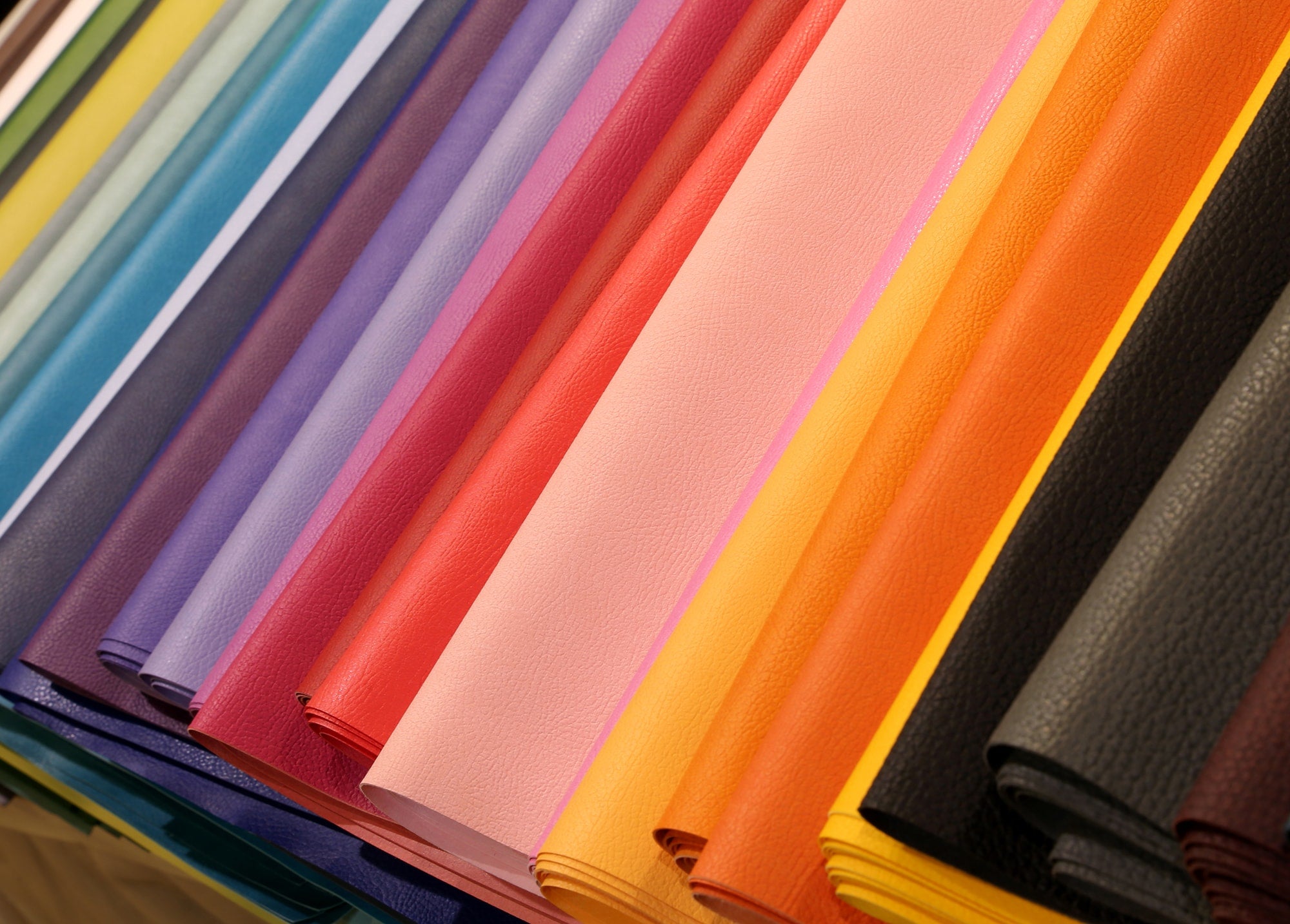
Illustrative image related to material synthetic leather
How is Material Synthetic Leather Transforming the Fashion Industry?
In the fashion and apparel industry, synthetic leather is increasingly favored for clothing, bags, and accessories due to its eco-friendly nature and luxurious appearance. This material provides designers with the flexibility to create innovative products that align with sustainable fashion trends. Buyers from regions like Brazil should prioritize suppliers that offer certifications for sustainability, ensuring that their products meet both market demands and ethical standards.
Why is Material Synthetic Leather Essential in the Marine Industry?
The marine industry relies on synthetic leather for upholstery in boats and marine vehicles, thanks to its water-resistant and mildew-resistant properties. This durability ensures that the upholstery can withstand harsh marine environments, providing long-lasting performance. International buyers should focus on suppliers that guarantee UV resistance and durability to ensure that their products remain functional and visually appealing over time.
What Role Does Material Synthetic Leather Play in Healthcare and Hospitality?
In the healthcare and hospitality sectors, synthetic leather is commonly used for upholstery in medical furniture and seating. Its easy-to-clean properties make it an ideal choice for environments that require high hygiene standards. B2B buyers in these industries should seek suppliers that offer antimicrobial treated materials to enhance the safety and longevity of their investments, ensuring a clean and welcoming environment for patients and guests alike.
3 Common User Pain Points for ‘material synthetic leather’ & Their Solutions
Scenario 1: Sourcing High-Quality Synthetic Leather for Diverse Applications
The Problem: B2B buyers often struggle to find synthetic leather that meets specific quality and performance standards for various applications, such as upholstery, automotive interiors, or fashion products. The market is saturated with different types of synthetic leather, making it challenging to differentiate between high-quality options and inferior products. This can lead to costly errors, such as purchasing materials that are not durable, lack the desired aesthetic appeal, or do not meet industry regulations, ultimately affecting the end product’s quality.
The Solution: To source high-quality synthetic leather effectively, buyers should prioritize established suppliers known for their rigorous quality control processes. Research suppliers that provide detailed specifications for their materials, including the type of synthetic leather (PU vs. PVC), thickness, and treatment for water and stain resistance. Request samples to evaluate texture, flexibility, and durability before making bulk purchases. Additionally, consider suppliers that offer customizable options to match specific project needs, ensuring that the sourced material aligns with the intended application. Engaging in direct communication with manufacturers can also facilitate better insights into the production process and material performance, allowing for informed decision-making.
Scenario 2: Addressing Environmental Concerns with Synthetic Leather
The Problem: As sustainability becomes a top priority for many businesses, B2B buyers face the challenge of selecting synthetic leather that aligns with eco-friendly practices. Traditional synthetic leathers, particularly those made from PVC, can have significant environmental impacts due to their production processes and disposal issues. Buyers are increasingly pressured to provide solutions that not only meet performance criteria but also demonstrate a commitment to sustainability, which can complicate the sourcing process.
The Solution: To address environmental concerns, buyers should seek out synthetic leather made from more sustainable materials, such as bio-based PU or recycled polyester. Research brands that emphasize eco-friendly production methods and certifications, such as OEKO-TEX or Global Recycle Standard. Building partnerships with suppliers who prioritize sustainability can enhance a company’s reputation and appeal to environmentally-conscious consumers. Furthermore, buyers can explore options for recycling or repurposing synthetic leather products at the end of their life cycle, which can mitigate waste and contribute to a circular economy model. Engaging with industry associations focused on sustainable materials can also provide valuable resources and networking opportunities.
Scenario 3: Overcoming Misconceptions About Synthetic Leather Durability
The Problem: Many businesses mistakenly perceive synthetic leather as a low-quality alternative to genuine leather, leading to hesitance in adopting it for high-end applications. This misconception can stem from past experiences with inferior products that cracked, peeled, or faded over time. B2B buyers must combat these stereotypes while justifying the long-term value and performance of synthetic leather to their stakeholders, including designers and end customers.
The Solution: To overcome misconceptions about durability, buyers should focus on educating their teams and clients about the advancements in synthetic leather technology. Highlight the benefits of modern synthetic options, such as PU leather, which offers superior flexibility, water resistance, and abrasion resistance compared to older materials. Provide evidence through case studies or testimonials from other businesses that have successfully used synthetic leather in demanding environments, showcasing its longevity and aesthetic qualities. Offering warranties or performance guarantees from reputable suppliers can also reassure clients of the material’s durability. Additionally, facilitating training sessions with suppliers on the proper care and maintenance of synthetic leather can enhance product performance and longevity, helping to dispel myths and encourage adoption.
Strategic Material Selection Guide for material synthetic leather
What Are the Key Properties of Common Synthetic Leather Materials?
In the realm of synthetic leather, several materials stand out due to their unique properties and suitability for various applications. Understanding these materials is crucial for international B2B buyers, especially those operating in diverse markets such as Africa, South America, the Middle East, and Europe.
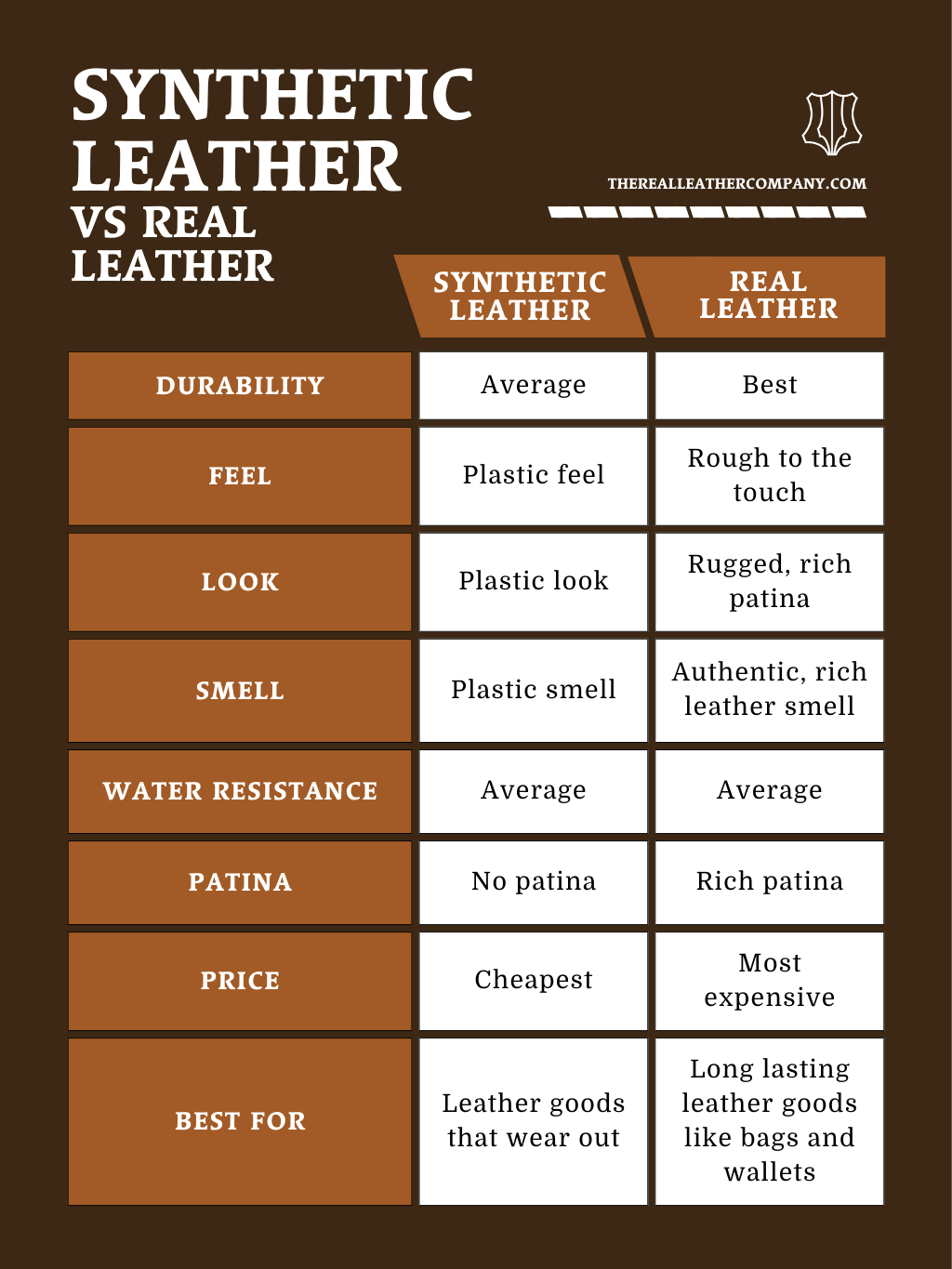
Illustrative image related to material synthetic leather
What Are the Characteristics of Polyurethane (PU) Leather?
Polyurethane leather, commonly referred to as PU leather, is a popular choice in the synthetic leather market. It is manufactured by applying a flexible polymer coating to a fabric backing, resulting in a soft texture that closely resembles genuine leather.
Key Properties: PU leather is known for its excellent durability, water resistance, and ease of cleaning. It can withstand various environmental conditions, making it suitable for both indoor and outdoor applications.
Pros & Cons: The primary advantage of PU leather is its affordability—often up to 75% less than genuine leather. However, it has lower breathability compared to natural leather, which may affect comfort in certain applications.
Impact on Application: PU leather is widely used in upholstery, automotive interiors, and fashion accessories. Its water-resistant properties make it ideal for environments where moisture is a concern.
Considerations for International Buyers: Buyers should ensure that the PU leather complies with local regulations, such as ASTM standards for safety and durability. Additionally, preferences for eco-friendly materials are increasing, particularly in Europe.
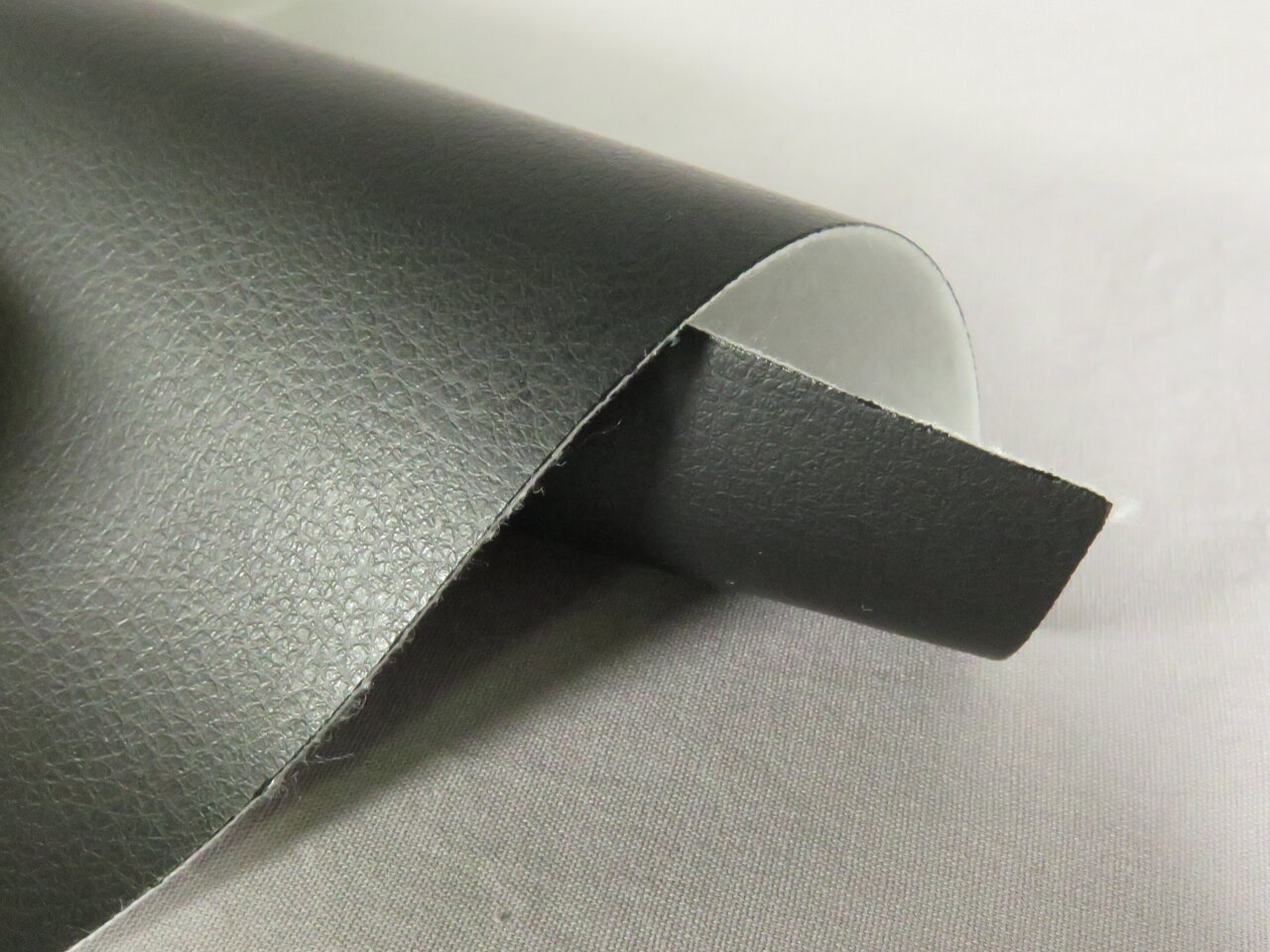
Illustrative image related to material synthetic leather
How Does Polyvinyl Chloride (PVC) Leather Compare?
PVC leather, or vinyl, is another prevalent synthetic leather option. It is produced by layering PVC on a textile base, providing a glossy finish and a wide range of colors.
Key Properties: PVC leather is highly resistant to moisture, stains, and UV light, making it suitable for outdoor and high-traffic environments.
Pros & Cons: While PVC leather is very affordable and versatile, it tends to be less flexible and can feel less luxurious than PU leather. Its manufacturing process can also be more complex, impacting production timelines.
Impact on Application: Commonly used in commercial upholstery, automotive seating, and fashion items, PVC leather is favored for its durability and ease of maintenance.
Considerations for International Buyers: Buyers should be aware of potential restrictions on PVC materials in certain regions due to environmental concerns. Compliance with local regulations, such as those in the EU regarding phthalates, is essential.
What Are the Benefits of Microfiber Leather?
Microfiber leather is a synthetic leather alternative made from ultra-fine polyester and nylon fibers. It is designed to mimic the texture and feel of genuine leather while offering additional benefits.
Key Properties: Microfiber leather is lightweight, breathable, and highly durable. It also boasts excellent stain resistance and can be easily cleaned.
Pros & Cons: The primary advantage of microfiber leather is its sustainable aspect, as it is often made from recycled materials. However, it can be more expensive than other synthetic options, which may deter budget-conscious buyers.
Impact on Application: This material is increasingly used in high-end fashion, upholstery, and automotive applications where quality and aesthetics are paramount.
Considerations for International Buyers: Buyers should consider the environmental impact of microfiber production and seek certifications that validate sustainable practices. Additionally, understanding the supply chain and sourcing practices is vital.
Summary of Material Properties
| Material | Typical Use Case for material synthetic leather | Key Advantage | Key Disadvantage/Limitation | Relative Cost (Low/Med/High) |
|---|---|---|---|---|
| PU Leather | Upholstery, automotive interiors, fashion items | Affordable and durable | Lower breathability | Low |
| PVC Leather | Commercial upholstery, automotive seating | Highly resistant to moisture | Less flexible, lower luxury feel | Low |
| Microfiber Leather | High-end fashion, luxury upholstery | Lightweight and sustainable | Higher cost | Med |
This strategic material selection guide provides a comprehensive overview of synthetic leather options, empowering international B2B buyers to make informed decisions tailored to their specific market needs.
In-depth Look: Manufacturing Processes and Quality Assurance for material synthetic leather
What Are the Main Stages of Manufacturing Synthetic Leather?
The manufacturing process of synthetic leather involves several critical stages that ensure the final product meets the required standards of quality and durability. Understanding these stages can help B2B buyers assess supplier capabilities and product consistency.
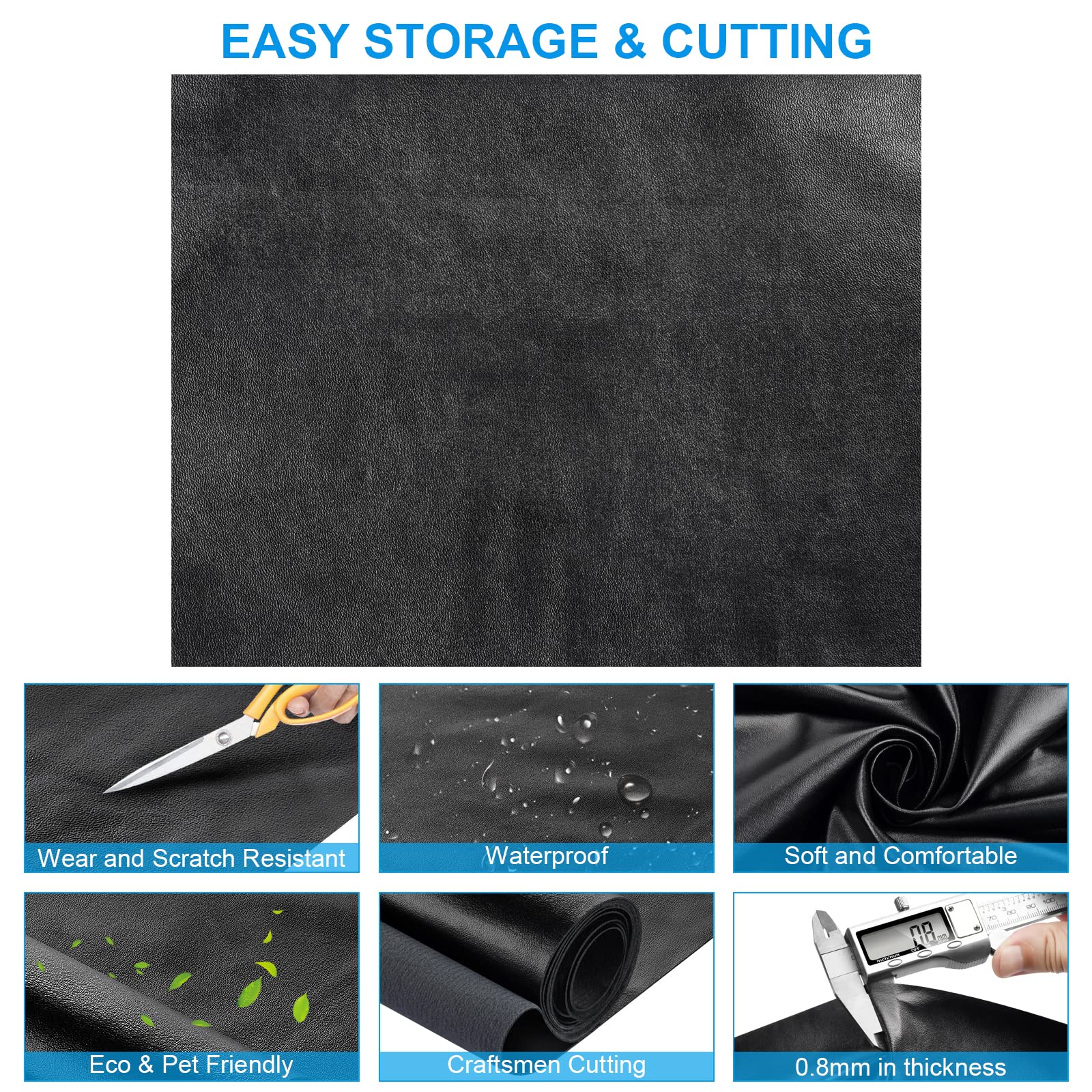
Illustrative image related to material synthetic leather
Material Preparation: What Goes Into Synthetic Leather?
The first stage in the production of synthetic leather is material preparation. Typically, synthetic leather is made from a base fabric, often polyester or cotton, that is then coated with a polymer such as polyurethane (PU) or polyvinyl chloride (PVC). This preparation stage includes:
- Selection of Base Fabric: The choice of fabric affects the overall quality, flexibility, and durability of the synthetic leather.
- Coating Process: The polymer is applied to the fabric using various methods, including roll coating or spray coating. This step is crucial as it determines the thickness and texture of the synthetic leather.
- Embossing: A textured pattern is embossed onto the surface to mimic the appearance of real leather. This technique not only enhances aesthetics but also adds to the material’s durability.
How Is Synthetic Leather Formed and Assembled?
Once the materials are prepared, the next stage is forming and assembling the synthetic leather. This includes:
- Heat Setting: The coated fabric is subjected to heat to ensure that the polymer adheres properly and achieves the desired characteristics.
- Cutting: The formed synthetic leather is cut into specific shapes and sizes based on the end product requirements. Precision in this stage is essential for maintaining quality.
- Sewing and Assembly: For applications such as upholstery, the pieces are sewn together. This requires skilled labor to ensure that the seams are strong and aesthetically pleasing.
What Finishing Techniques Are Used in Synthetic Leather Production?
Finishing is a vital stage that enhances the appearance and functionality of synthetic leather. Key finishing techniques include:
- Surface Treatment: Additional coatings may be applied to improve water resistance, stain resistance, and UV protection. This can also involve applying a protective topcoat that enhances durability.
- Quality Inspection: At this stage, quality inspectors check for defects such as color consistency, texture uniformity, and overall appearance before the product is packaged for shipment.
What Are the International Quality Standards Relevant to Synthetic Leather?
Quality assurance in synthetic leather manufacturing is critical for maintaining consistency and reliability in the final product. International standards such as ISO 9001 are widely recognized and provide a framework for quality management systems. Specific standards relevant to synthetic leather include:
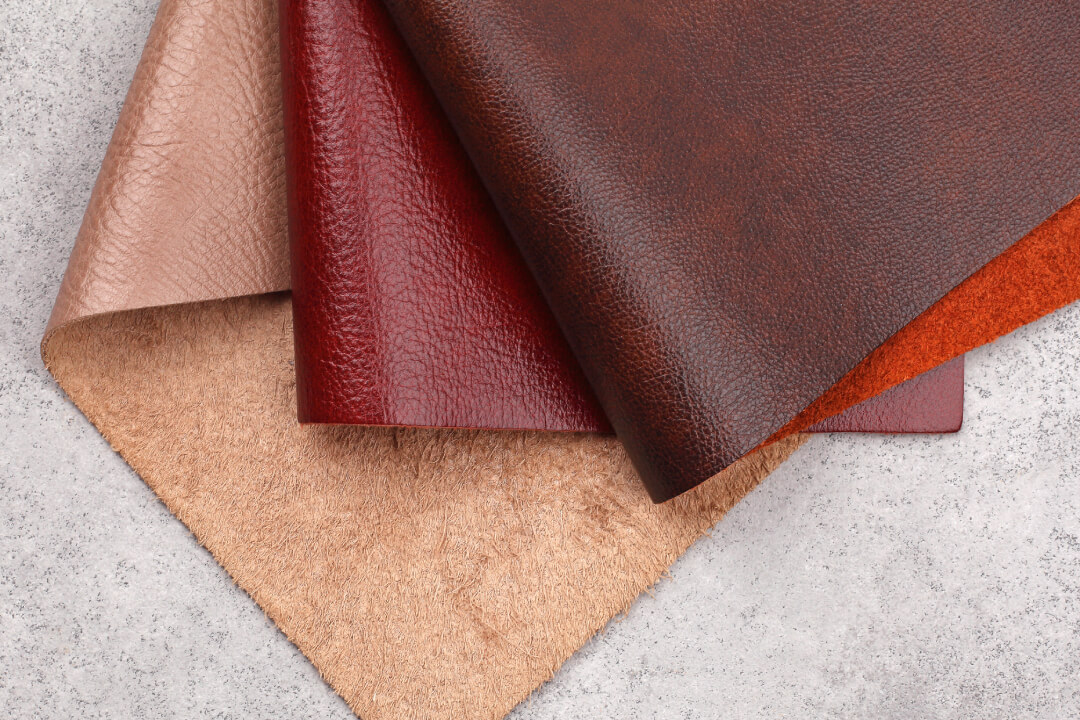
Illustrative image related to material synthetic leather
- ISO 9001: This standard focuses on ensuring consistent quality and customer satisfaction through effective quality management systems.
- CE Marking: In the European Union, products must meet health, safety, and environmental protection standards to receive CE marking.
- API Standards: For applications in the automotive industry, adhering to API standards ensures that materials meet specific performance criteria.
What Are the Key Quality Control Checkpoints in Synthetic Leather Manufacturing?
Quality control (QC) checkpoints are essential in ensuring that the synthetic leather produced meets the required standards. Common QC stages include:
- Incoming Quality Control (IQC): Raw materials are inspected upon arrival to ensure they meet specifications. This includes checking the base fabric and polymer quality.
- In-Process Quality Control (IPQC): During manufacturing, regular inspections are conducted to monitor the coating and embossing processes, ensuring adherence to quality standards.
- Final Quality Control (FQC): Before shipment, finished products undergo thorough inspections for defects, color consistency, and adherence to specifications.
How Can B2B Buyers Verify Supplier Quality Control?
To ensure that suppliers maintain high standards of quality control, B2B buyers can implement several strategies:
- Supplier Audits: Conducting regular audits of suppliers can help buyers assess their adherence to quality standards and production capabilities.
- Requesting Quality Reports: Buyers should ask for detailed quality reports that outline testing methods, results, and compliance with international standards.
- Third-Party Inspections: Engaging third-party inspection agencies can provide an impartial assessment of the supplier’s production processes and quality assurance measures.
What Common Testing Methods Are Used to Ensure Synthetic Leather Quality?
Testing methods are essential in verifying the quality and durability of synthetic leather. Common tests include:
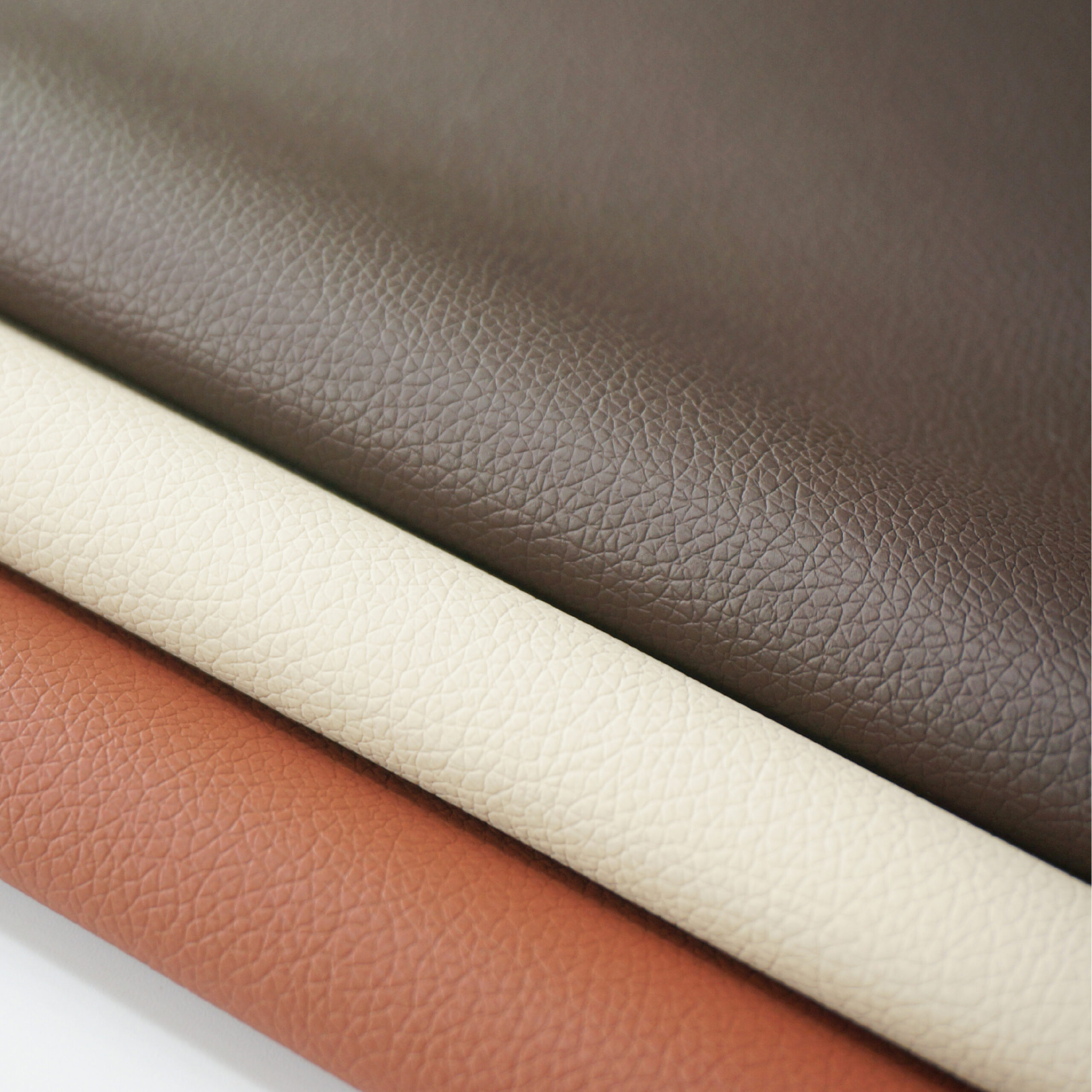
Illustrative image related to material synthetic leather
- Abrasion Resistance Testing: This evaluates how well the material withstands wear and tear, which is crucial for upholstery and automotive applications.
- Water Resistance Testing: Determining the fabric’s ability to repel water is vital for products intended for outdoor or high-moisture environments.
- Tensile Strength Testing: This measures the fabric’s strength and elasticity, ensuring it can withstand the stresses of everyday use.
How Do Quality Control Nuances Affect International B2B Buyers?
International B2B buyers, particularly from regions like Africa, South America, the Middle East, and Europe, should be aware of specific nuances in quality control:
- Regional Standards: Different regions may have varying standards and regulations that suppliers must comply with. Understanding these can help buyers make informed decisions.
- Cultural Differences: Communication styles and business practices may differ across regions, influencing how quality assurance processes are implemented and monitored.
- Logistics and Supply Chain Considerations: Buyers should consider the implications of shipping and logistics on product quality, particularly in relation to temperature and humidity control during transport.
In summary, understanding the manufacturing processes and quality assurance measures for synthetic leather is crucial for B2B buyers. By knowing what to look for in suppliers, including adherence to international standards and thorough quality control measures, businesses can ensure they receive high-quality products that meet their specific needs.
Practical Sourcing Guide: A Step-by-Step Checklist for ‘material synthetic leather’
Introduction
This guide serves as a practical checklist for B2B buyers looking to procure synthetic leather materials. With the growing demand for faux leather across various industries, understanding the sourcing process is essential for making informed decisions that align with your business needs and sustainability goals.
Step 1: Define Your Technical Specifications
Clearly outline the specific requirements for the synthetic leather you need. Consider factors such as the intended use (e.g., upholstery, automotive, fashion), desired texture (smooth, pebbled, embossed), and essential properties (water resistance, stain resistance). This step is crucial as it helps narrow down your options and ensures you communicate effectively with potential suppliers.
Step 2: Research Material Types and Variants
Familiarize yourself with the different types of synthetic leather available, such as PU leather and PVC. Each type has unique characteristics that may suit specific applications better. For instance, PU leather is softer and more breathable than PVC, making it ideal for high-end upholstery, while PVC might be more suitable for outdoor applications due to its durability and weather resistance.
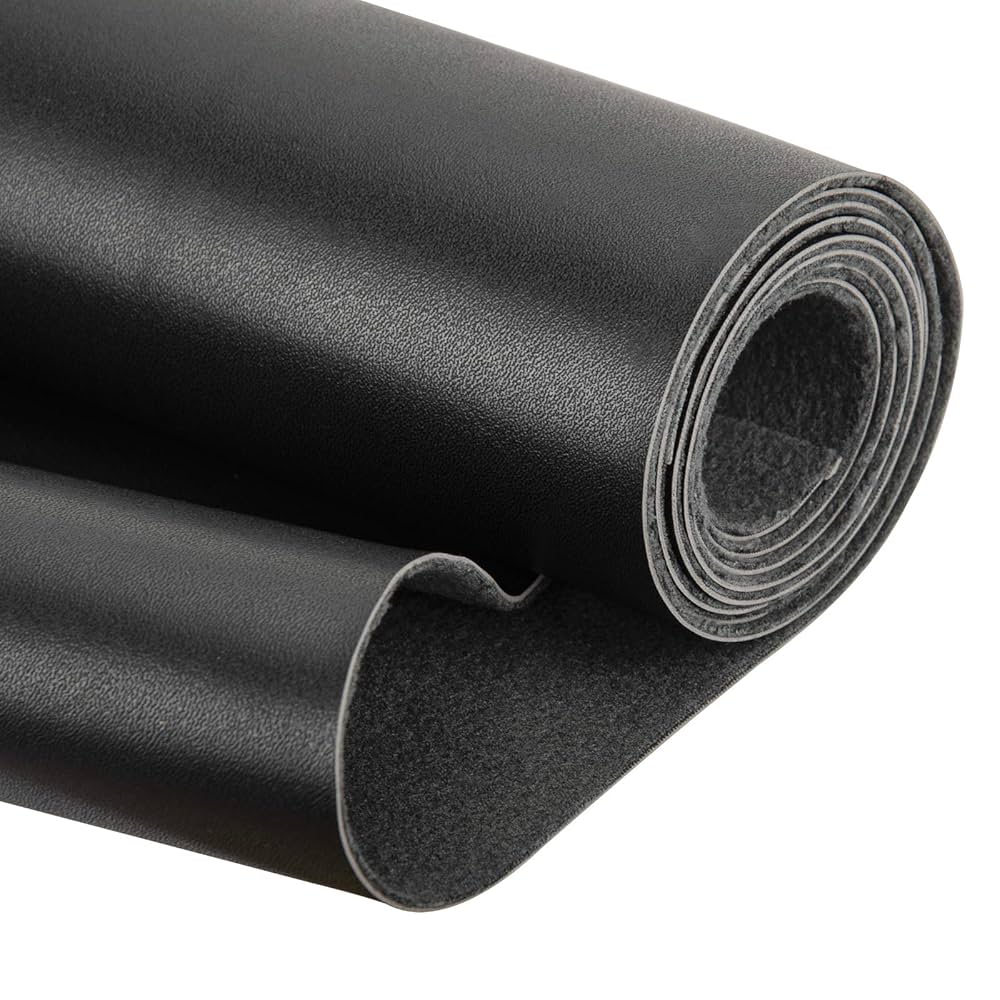
Illustrative image related to material synthetic leather
Step 3: Evaluate Potential Suppliers
Before committing to any supplier, conduct thorough evaluations. Request company profiles, product samples, and references from clients within your industry or region. Look for suppliers with a proven track record in quality and reliability, as this can significantly affect your production timelines and product quality.
Step 4: Verify Supplier Certifications
Check for relevant certifications that indicate compliance with international standards, such as ISO 9001 for quality management or OEKO-TEX for safety and environmental standards. Certifications not only assure product quality but also demonstrate the supplier’s commitment to sustainability, which is increasingly important for many businesses today.
Step 5: Request Samples for Quality Assessment
Always ask for physical samples before making a large purchase. Evaluate the samples for texture, color consistency, and overall quality. This is your opportunity to assess how the material will perform in real-world applications and ensure it meets your specifications.
Step 6: Understand Pricing and Payment Terms
Discuss pricing structures and payment terms upfront to avoid misunderstandings later. Consider the total cost of ownership, including shipping, taxes, and potential duties, especially when sourcing from international suppliers. Be sure to negotiate terms that align with your cash flow needs.
Step 7: Establish Clear Communication Channels
Maintain open lines of communication with your suppliers throughout the sourcing process. Establish a dedicated point of contact and clarify expectations regarding lead times, order updates, and any issues that may arise. Effective communication fosters strong supplier relationships and ensures smoother transactions.
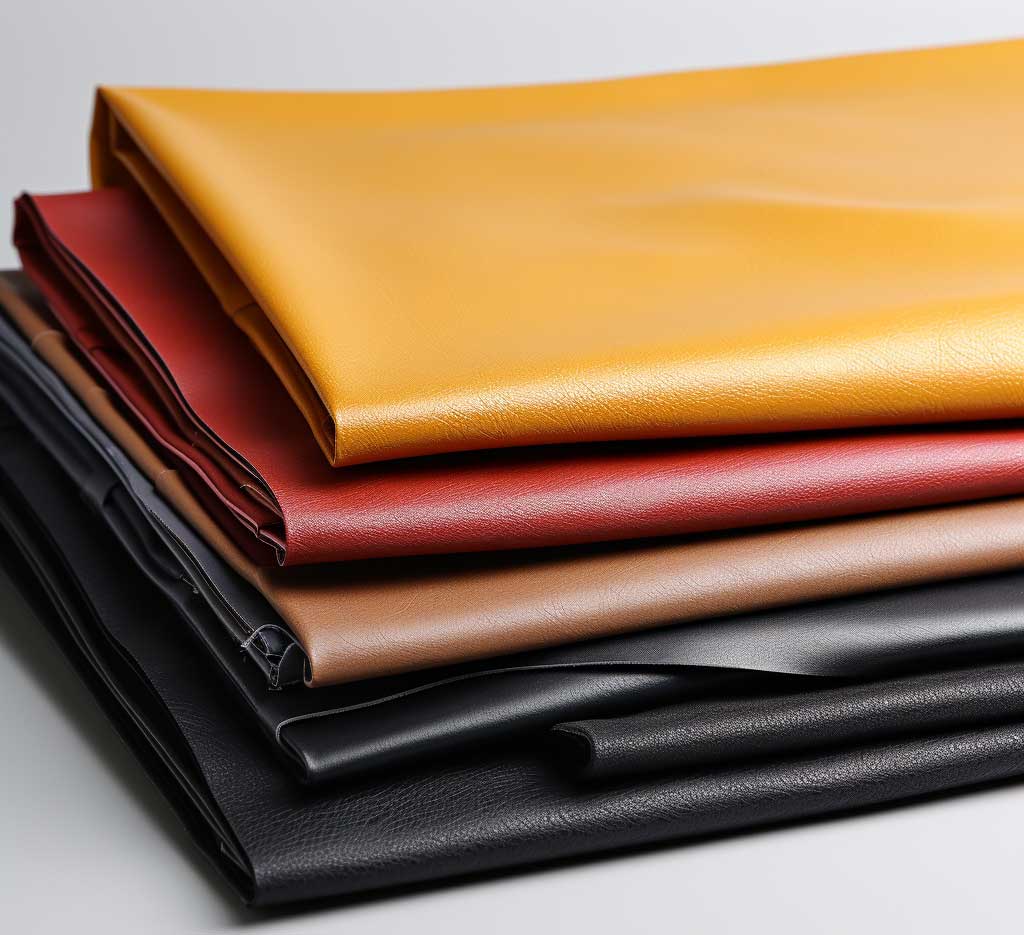
Illustrative image related to material synthetic leather
By following this checklist, B2B buyers can navigate the complexities of sourcing synthetic leather more effectively, ultimately leading to better procurement decisions that support their business objectives.
Comprehensive Cost and Pricing Analysis for material synthetic leather Sourcing
What are the Key Cost Components in Sourcing Synthetic Leather?
When sourcing synthetic leather, understanding the various cost components is essential for effective budget management. The primary cost elements include:
-
Materials: The cost of raw materials, such as polyurethane (PU) or polyvinyl chloride (PVC), significantly influences the overall price. PU leather tends to be more expensive than PVC due to its superior quality and softness.
-
Labor: Labor costs can vary based on the region and the complexity of production processes. Skilled labor is often required for quality assurance and finishing processes, which may add to the overall cost.
-
Manufacturing Overhead: This includes expenses related to factory operations, maintenance, and utilities. High-volume production can lead to economies of scale, reducing the overhead cost per unit.
-
Tooling: Initial tooling costs for custom designs can be substantial. However, once established, these costs can be amortized over larger production runs, making it crucial to consider order volumes.
-
Quality Control (QC): Investing in stringent QC processes ensures that the final product meets the required specifications. This may involve additional costs for testing and certification, particularly for markets with strict compliance standards.
-
Logistics: Shipping costs can vary based on distance, mode of transport, and the volume of the order. International buyers should factor in customs duties and tariffs that may apply upon importation.
-
Margin: Suppliers typically add a profit margin to the total cost of production. Understanding the typical margin in the synthetic leather market can help buyers negotiate better pricing.
How Do Price Influencers Affect Synthetic Leather Costs?
Several factors can influence the pricing of synthetic leather:
-
Volume/MOQ: Suppliers often offer better pricing for larger orders due to economies of scale. Minimum Order Quantities (MOQs) can significantly affect pricing; negotiating lower MOQs can be beneficial for smaller businesses.
-
Specifications/Customization: Custom colors, textures, or other specifications can raise costs. Standard products are typically cheaper than customized solutions.
-
Materials: The choice between PU and PVC, as well as the quality of the materials used, can significantly impact pricing. Higher-quality materials tend to have a longer lifespan and lower Total Cost of Ownership (TCO).
-
Quality/Certifications: Certifications for sustainability, fire resistance, or other industry standards can add to the cost but may be necessary for specific markets. Buyers should assess the importance of these certifications in relation to their target market.
-
Supplier Factors: Supplier reputation, reliability, and location can affect pricing. Working with established suppliers may come at a premium but can provide benefits in terms of quality and service.
-
Incoterms: Understanding Incoterms is crucial for international transactions. Terms such as FOB (Free on Board) or CIF (Cost, Insurance, and Freight) can alter the final cost, as they define who is responsible for shipping costs and risks at various stages of transport.
What Buyer Tips Can Enhance Cost-Efficiency in Synthetic Leather Sourcing?
To maximize cost-efficiency when sourcing synthetic leather, consider the following strategies:
-
Negotiation: Engage suppliers in discussions about pricing and terms. Building a long-term relationship can lead to better deals over time.
-
Total Cost of Ownership: Look beyond the initial purchase price. Evaluate factors such as durability, maintenance, and potential waste over time to determine the true cost of the material.
-
Pricing Nuances for International Buyers: When sourcing from international suppliers, be aware of fluctuations in currency exchange rates and their impact on pricing. Additionally, consider local market trends that may affect availability and pricing in your region.
-
Research and Comparison: Conduct thorough market research to compare prices and terms from different suppliers. This not only helps in finding competitive pricing but also provides leverage in negotiations.
In conclusion, while sourcing synthetic leather can present complexities in pricing and cost structures, a well-informed approach can lead to significant savings and enhanced value for international B2B buyers. Understanding cost components, price influencers, and effective negotiation strategies is key to successful sourcing in this dynamic market.
Alternatives Analysis: Comparing material synthetic leather With Other Solutions
When evaluating materials for upholstery and various manufacturing needs, it’s crucial to consider alternatives to material synthetic leather. Understanding the comparative advantages and disadvantages of these options can aid B2B buyers in making informed decisions that align with their specific operational requirements and budget constraints.
| Comparison Aspect | Material Synthetic Leather | Alternative 1: Genuine Leather | Alternative 2: Textiles (Cotton, Polyester) |
|---|---|---|---|
| Performance | Durable, water-resistant, and stain-resistant; mimics leather feel. | High durability; develops a unique patina over time. | Varies by type; generally breathable but less durable than leather. |
| Cost | Typically 50-75% cheaper than genuine leather. | Higher cost due to sourcing and processing of animal hides. | Generally lower cost; varies based on fabric type and quality. |
| Ease of Implementation | Easy to cut and sew; available in various textures and colors. | Requires specific tools and expertise for sewing and maintenance. | Easy to work with; widely available in many styles. |
| Maintenance | Low maintenance; easy to clean with water and mild detergent. | Requires conditioning and special cleaning to maintain appearance. | Easy to wash; some fabrics may require special care. |
| Best Use Case | Ideal for commercial upholstery, automotive interiors, and marine applications. | Best for luxury goods, high-end furniture, and fashion items. | Suitable for casual clothing, home textiles, and budget-friendly upholstery. |
What Are the Advantages and Disadvantages of Genuine Leather Compared to Material Synthetic Leather?
Genuine leather offers several benefits, including exceptional durability and a timeless aesthetic. It ages beautifully, developing a unique patina that can enhance its appearance over time. However, it comes at a significantly higher price point and requires careful maintenance to avoid damage from moisture and wear. The sourcing and processing of animal hides also raise ethical concerns for some buyers. For companies looking to position themselves as environmentally responsible, genuine leather may not align with their brand values.
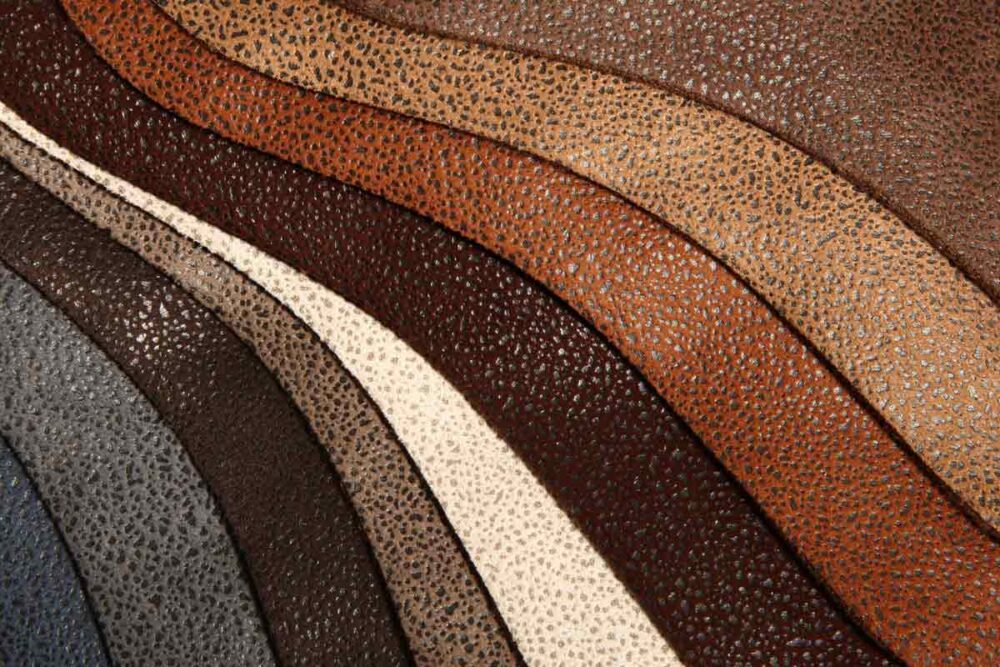
Illustrative image related to material synthetic leather
How Do Textiles Like Cotton and Polyester Compare to Material Synthetic Leather?
Textiles such as cotton and polyester provide a versatile and cost-effective alternative to synthetic leather. They are readily available and can be produced in a myriad of colors and patterns. However, their durability and resistance to water and stains are generally inferior compared to material synthetic leather. While cotton can be breathable and comfortable, it may not hold up well in high-traffic or outdoor environments. Polyester, although more durable, can lack the luxurious feel that synthetic leather offers.
How Can B2B Buyers Choose the Right Solution for Their Needs?
When selecting the right material for a project, B2B buyers should evaluate their specific requirements, including budget constraints, desired aesthetics, and intended use. Material synthetic leather is an excellent option for those seeking affordability and versatility without compromising on appearance. In contrast, genuine leather may appeal to brands targeting high-end markets, while textiles can cater to more casual or budget-conscious applications. Understanding these alternatives enables buyers to align their material choice with their business objectives and customer expectations effectively.
Essential Technical Properties and Trade Terminology for material synthetic leather
What Are the Key Technical Properties of Synthetic Leather Important for B2B Buyers?
Understanding the technical specifications of synthetic leather is crucial for B2B buyers, as these properties directly affect product quality, application, and overall satisfaction. Here are some essential specifications to consider:
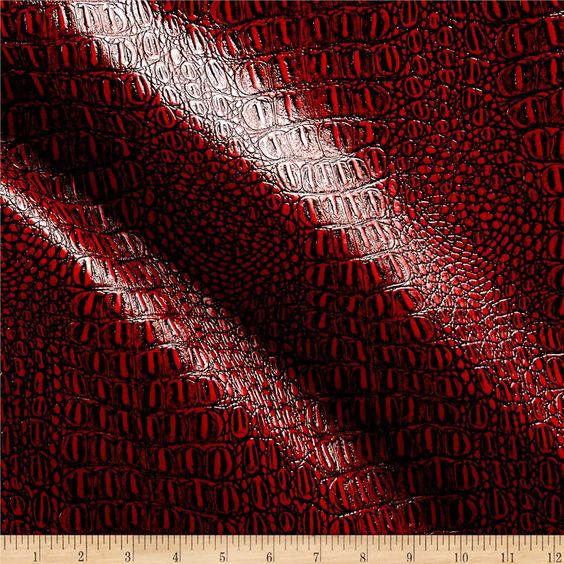
Illustrative image related to material synthetic leather
1. Material Composition
Synthetic leather is typically made from either polyurethane (PU) or polyvinyl chloride (PVC). PU leather is known for its softness and durability, making it a preferred choice for high-end applications. PVC, while more cost-effective, may lack the same level of suppleness. Buyers should consider the intended use when selecting between these materials, as the composition can affect longevity and maintenance.
2. Abrasion Resistance
Abrasion resistance measures how well a material can withstand wear and tear from friction. This property is particularly important for upholstery and automotive applications, where durability is a priority. Materials with high abrasion resistance will last longer, thereby reducing replacement costs over time. For B2B buyers, this translates into a better return on investment.
3. Water and Stain Resistance
Synthetic leather generally has superior water and stain resistance compared to genuine leather. Many variants are treated to repel moisture and resist stains, making them easier to clean and maintain. This is especially valuable in commercial settings, such as restaurants or healthcare facilities, where hygiene is paramount. Buyers should look for products with these features to ensure long-term usability.
4. Breathability
Breathability refers to how well a material allows air to pass through it. While synthetic leather typically has lower breathability than natural leather, some variations offer improved airflow, making them more comfortable for wearables or upholstery. Understanding breathability is essential for applications where comfort is a priority, such as clothing and seating.
5. UV Resistance
UV resistance indicates how well a material can withstand exposure to sunlight without fading or degrading. For outdoor applications, such as patio furniture or marine upholstery, UV resistance is critical. Buyers should ensure the synthetic leather they choose is treated for UV protection to maintain color and integrity over time.

Illustrative image related to material synthetic leather
What Are Common Trade Terms Used in the Synthetic Leather Industry?
Familiarity with industry terminology can facilitate smoother transactions and better negotiations. Here are several key terms that B2B buyers should know:
1. OEM (Original Equipment Manufacturer)
OEM refers to companies that produce parts or equipment that may be marketed by another manufacturer. In the synthetic leather industry, OEM partnerships are common, allowing companies to offer branded products without investing in their own manufacturing capabilities. Understanding OEM relationships can help buyers identify potential suppliers and assess product quality.
2. MOQ (Minimum Order Quantity)
MOQ is the smallest quantity of a product that a supplier is willing to sell. Knowing the MOQ is essential for B2B buyers to ensure that they can meet their purchasing needs while managing inventory costs. Buyers should negotiate MOQs to align with their production schedules and market demand.
3. RFQ (Request for Quotation)
An RFQ is a formal process where buyers solicit price quotes from suppliers for specific products or services. Issuing an RFQ allows B2B buyers to compare pricing, terms, and conditions from multiple suppliers, leading to more informed purchasing decisions.
4. Incoterms (International Commercial Terms)
Incoterms are a set of standardized trade terms that define the responsibilities of buyers and sellers in international transactions. These terms clarify who is responsible for shipping, insurance, and tariffs, which can significantly affect overall costs. B2B buyers must understand these terms to avoid unexpected expenses and ensure smooth logistics.
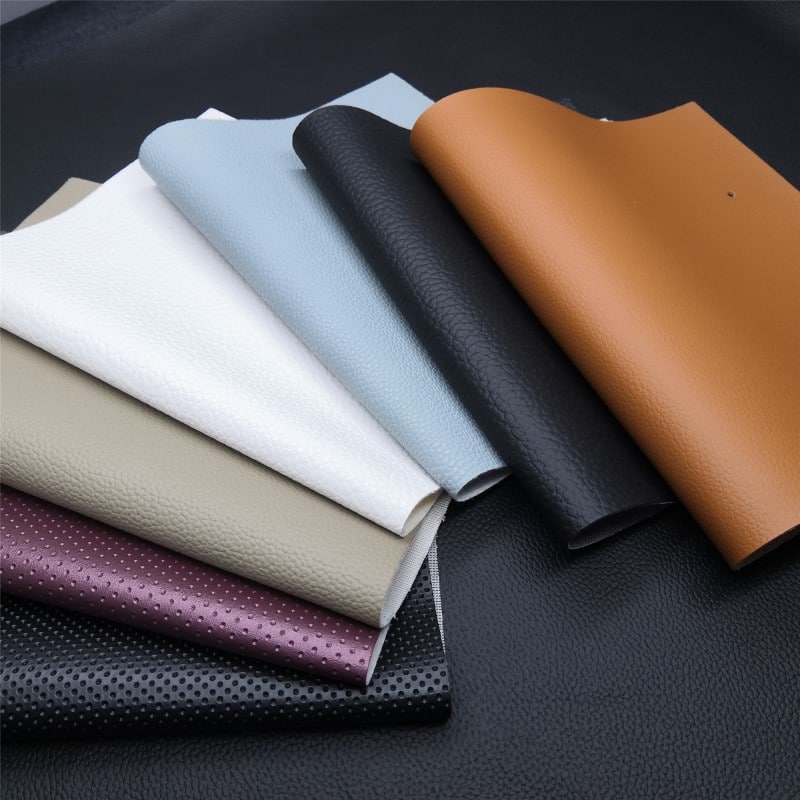
Illustrative image related to material synthetic leather
5. Lead Time
Lead time refers to the amount of time it takes from placing an order to receiving the goods. In the synthetic leather industry, lead times can vary based on production schedules and shipping methods. Understanding lead times is crucial for B2B buyers to effectively manage inventory and meet customer demands.
By grasping these technical properties and trade terms, B2B buyers can make informed decisions that enhance their procurement strategies in the synthetic leather market.
Navigating Market Dynamics and Sourcing Trends in the material synthetic leather Sector
What Are the Key Market Trends Driving the Material Synthetic Leather Sector?
The material synthetic leather market is experiencing significant growth driven by several global factors. The demand for cost-effective and versatile materials in various industries, including automotive, furniture, and fashion, has surged, particularly in emerging markets like Brazil, Saudi Arabia, and other regions in Africa and South America. Notably, the versatility of synthetic leather—available in various textures, colors, and finishes—offers buyers a wide range of options to meet their specific needs.
Recent advancements in manufacturing technology have led to improved quality and performance characteristics, making synthetic leather increasingly comparable to genuine leather. Innovations in production processes, such as the introduction of polyurethane (PU) leather, have enhanced durability, water resistance, and ease of maintenance. As a result, international buyers are increasingly sourcing synthetic leather to meet both aesthetic and functional requirements while reducing costs by up to 75% compared to traditional leather.
Additionally, the rise of e-commerce platforms has simplified the sourcing process for B2B buyers, allowing for bulk purchasing and direct access to manufacturers. This trend is particularly beneficial for buyers in regions with varying import regulations, as it facilitates a smoother supply chain and inventory management.

Illustrative image related to material synthetic leather
How Important Is Sustainability and Ethical Sourcing in the Material Synthetic Leather Market?
Sustainability has become a focal point for businesses looking to align with consumer preferences and regulatory requirements. The environmental impact of traditional leather production, which involves significant water usage and chemical processing, has prompted a shift towards synthetic alternatives that are more sustainable. Synthetic leather, particularly those made from eco-friendly materials, is gaining traction as an ethical choice in various industries.
For B2B buyers, understanding the importance of ethical supply chains is crucial. Sourcing synthetic leather from manufacturers that adhere to sustainable practices not only enhances brand reputation but also meets the growing demand for environmentally responsible products. Certifications such as OEKO-TEX and Global Recycled Standard (GRS) can serve as indicators of sustainability and ethical sourcing, providing buyers with the assurance that their materials are produced with minimal environmental impact.
Moreover, as the global market increasingly prioritizes sustainable practices, buyers who invest in certified synthetic leather can differentiate themselves in competitive markets, appealing to consumers who prioritize ethical considerations in their purchasing decisions.
What Is the Historical Context of Material Synthetic Leather?
The evolution of synthetic leather can be traced back to the early 20th century, with the introduction of products like Naugahyde in 1920. Initially developed as a cost-effective alternative to genuine leather, synthetic leather has undergone significant advancements in both production techniques and material formulations.
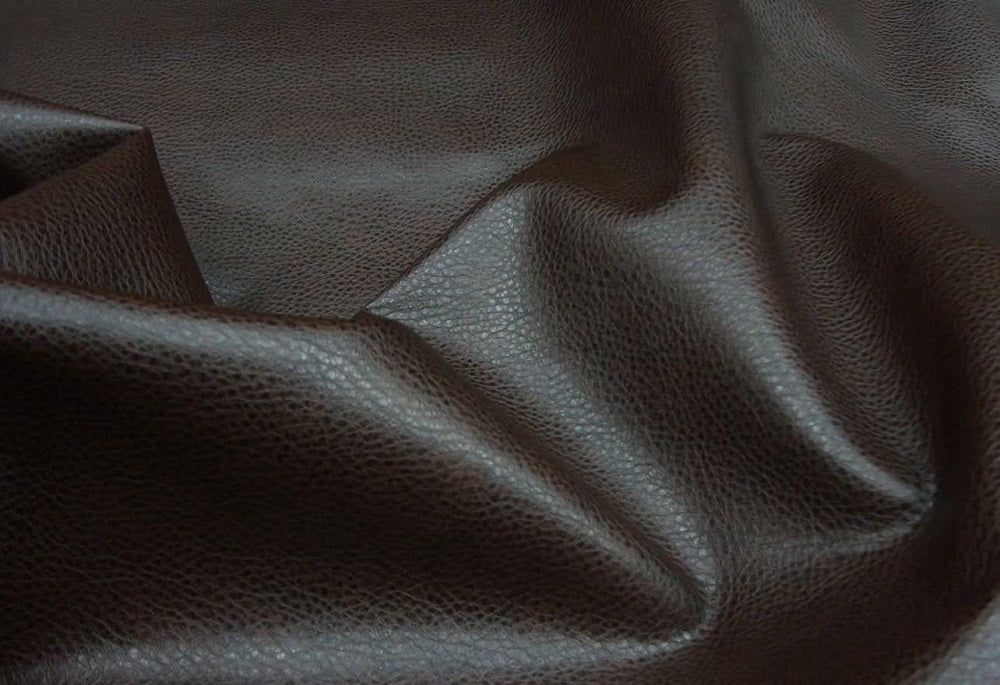
Illustrative image related to material synthetic leather
Throughout the decades, the focus shifted from merely replicating the look of leather to enhancing the performance characteristics of synthetic materials. The introduction of PU leather in the late 20th century marked a significant milestone, offering a softer, more durable alternative that closely mimicked the tactile properties of genuine leather.
Today, the market continues to evolve, driven by technological advancements and changing consumer preferences, positioning synthetic leather as a leading material choice across various industries. For B2B buyers, understanding this historical context is essential for making informed sourcing decisions that align with current market demands and future trends.
Frequently Asked Questions (FAQs) for B2B Buyers of material synthetic leather
-
How do I choose the right type of synthetic leather for my project?
Choosing the right type of synthetic leather depends on your specific application, budget, and desired aesthetic. Consider factors such as the material’s durability, flexibility, and ease of maintenance. PU leather is often preferred for its soft texture and resemblance to genuine leather, making it suitable for high-end applications. Conversely, PVC leather is more cost-effective and durable for commercial use. Always request samples to evaluate the quality and performance of the materials before making a bulk purchase. -
What are the advantages of sourcing synthetic leather from international suppliers?
Sourcing synthetic leather internationally can provide access to a wider variety of products, competitive pricing, and specialized materials that may not be available locally. Countries like China are leading producers, offering diverse options in terms of textures and finishes. However, it’s essential to understand local regulations, import duties, and shipping logistics to ensure a smooth procurement process. Establishing strong relationships with suppliers can also lead to better terms and consistent quality. -
What minimum order quantities (MOQs) should I expect when ordering synthetic leather?
Minimum order quantities for synthetic leather can vary significantly depending on the supplier and the type of material. Typically, MOQs can range from 50 to 500 yards or more. It’s essential to clarify these terms upfront and discuss your needs with potential suppliers. If you are a smaller buyer, some manufacturers may offer flexible MOQs or allow you to combine different materials in one order to meet minimum requirements. -
How can I ensure the quality of synthetic leather before purchasing?
To ensure quality, request samples from suppliers to evaluate the texture, durability, and finish of the synthetic leather. Look for certifications or quality assurance standards that indicate the material meets industry specifications. Additionally, consider conducting a factory visit if possible, or engage a third-party inspection service to verify the production process and product quality before shipment. -
What payment terms are common in international synthetic leather transactions?
Payment terms can vary widely among suppliers, but common practices include upfront deposits (typically 30-50%) with the balance due prior to shipment. Some suppliers may offer payment via letters of credit, which can protect both parties. Negotiate payment terms that suit your financial situation while ensuring supplier security. It’s advisable to use trusted payment platforms to mitigate risks associated with international transactions. -
What are the best practices for shipping synthetic leather internationally?
When shipping synthetic leather, choose a reliable logistics partner experienced in handling textiles. Ensure that the materials are properly packaged to prevent damage during transit. Familiarize yourself with import regulations in your country to avoid delays. Consider using air freight for quicker delivery, but weigh the cost against sea freight for larger orders. Always track shipments to stay updated on their status. -
How do I handle customs clearance for synthetic leather imports?
Customs clearance for synthetic leather imports requires accurate documentation, including invoices, packing lists, and certificates of origin. Ensure that the classification of your goods is correct to avoid unexpected tariffs or delays. Engage a customs broker if you’re unfamiliar with the process; they can help navigate regulations and ensure compliance with local laws. Staying informed about any trade agreements or tariffs that may apply can also help reduce costs. -
Can I customize synthetic leather products to fit my brand’s needs?
Yes, many manufacturers offer customization options for synthetic leather, including specific colors, textures, and finishes tailored to your brand’s requirements. Discuss your design specifications with potential suppliers, including any branding elements you wish to incorporate. Be prepared for possible minimum order quantities for customized products, and ensure that you receive prototypes for approval before final production to align with your expectations.
Top 4 Material Synthetic Leather Manufacturers & Suppliers List
1. Naugahyde – PU Leather & Faux Leather
Domain: decorativefabricsdirect.com
Registered: 2004 (21 years)
Introduction: PU Leather & Faux Leather | Vinyl Upholstery Fabric. Terms: Free Shipping Coupon Code: SHIPFREE for most $199 orders. Available for wholesale purchase by the yard or full roll. Key brands include Naugahyde, Omnova Boltaflex, Nassimi, and Spradling. Suitable for furniture, automotive, marine, and commercial projects. Features: durable, easy to clean, available in rich colors, and significantly lowe…
2. Sewport – Faux Leather Solutions
Domain: sewport.com
Registered: 2015 (10 years)
Introduction: Faux leather, also known as synthetic leather, is a petroleum-based alternative to genuine leather. It is soft to the touch, water-resistant, and highly resistant to stains, making it easy to clean. While less durable than real leather, it is resistant to abrasions and cuts, ideal for upholstery in homes with children or pets. Faux leather can be produced in various colors, including unconventiona…
3. Buffalo Jackson – Faux Leather Essentials
Domain: buffalojackson.com
Registered: 2011 (14 years)
Introduction: This company, Buffalo Jackson – Faux Leather Essentials, is a notable entity in the market. For specific product details, it is recommended to visit their website directly.
4. Fabric Wholesale Direct – Faux Leather Fabric
Domain: fabricwholesaledirect.com
Registered: 2014 (11 years)
Introduction: Faux Leather Fabric By The Yard, Free Shipping On Orders $99+, Available in various colors and patterns, Suitable for multiple applications including apparel, upholstery, and home decor.
Strategic Sourcing Conclusion and Outlook for material synthetic leather
As the global demand for sustainable and cost-effective materials continues to rise, strategic sourcing of synthetic leather presents a significant opportunity for B2B buyers in diverse regions such as Africa, South America, the Middle East, and Europe. The advantages of synthetic leather, including its affordability, versatility, and eco-friendliness, make it an attractive alternative to genuine leather. With prices often up to 75% lower and enhanced durability, the material is not only ideal for various applications—from upholstery to automotive interiors—but also aligns with the growing consumer preference for vegan and sustainable products.
In navigating the complexities of sourcing synthetic leather, buyers are encouraged to leverage relationships with reliable suppliers who offer a wide range of textures and finishes. This flexibility enables businesses to meet specific market demands while maintaining quality and cost-effectiveness.
Looking ahead, the synthetic leather market is poised for growth, driven by innovations in material technology and increasing awareness of sustainable practices. International buyers should act now to capitalize on these trends, ensuring they remain competitive and responsive to evolving consumer preferences. Embrace the potential of synthetic leather and position your business for success in a rapidly changing landscape.
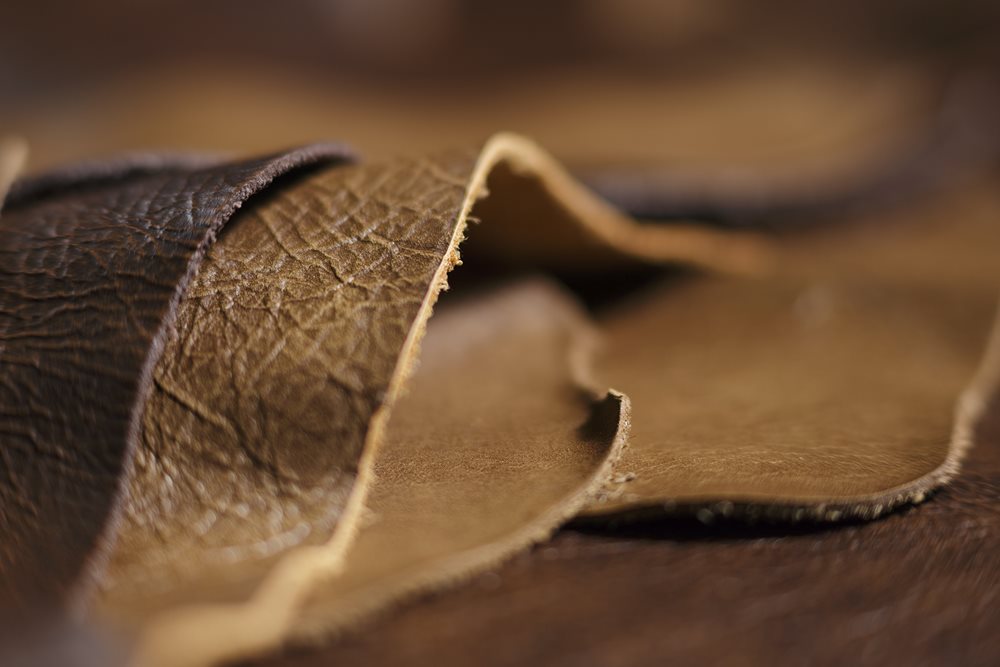
Illustrative image related to material synthetic leather
Important Disclaimer & Terms of Use
⚠️ Important Disclaimer
The information provided in this guide, including content regarding manufacturers, technical specifications, and market analysis, is for informational and educational purposes only. It does not constitute professional procurement advice, financial advice, or legal advice.
While we have made every effort to ensure the accuracy and timeliness of the information, we are not responsible for any errors, omissions, or outdated information. Market conditions, company details, and technical standards are subject to change.
B2B buyers must conduct their own independent and thorough due diligence before making any purchasing decisions. This includes contacting suppliers directly, verifying certifications, requesting samples, and seeking professional consultation. The risk of relying on any information in this guide is borne solely by the reader.


